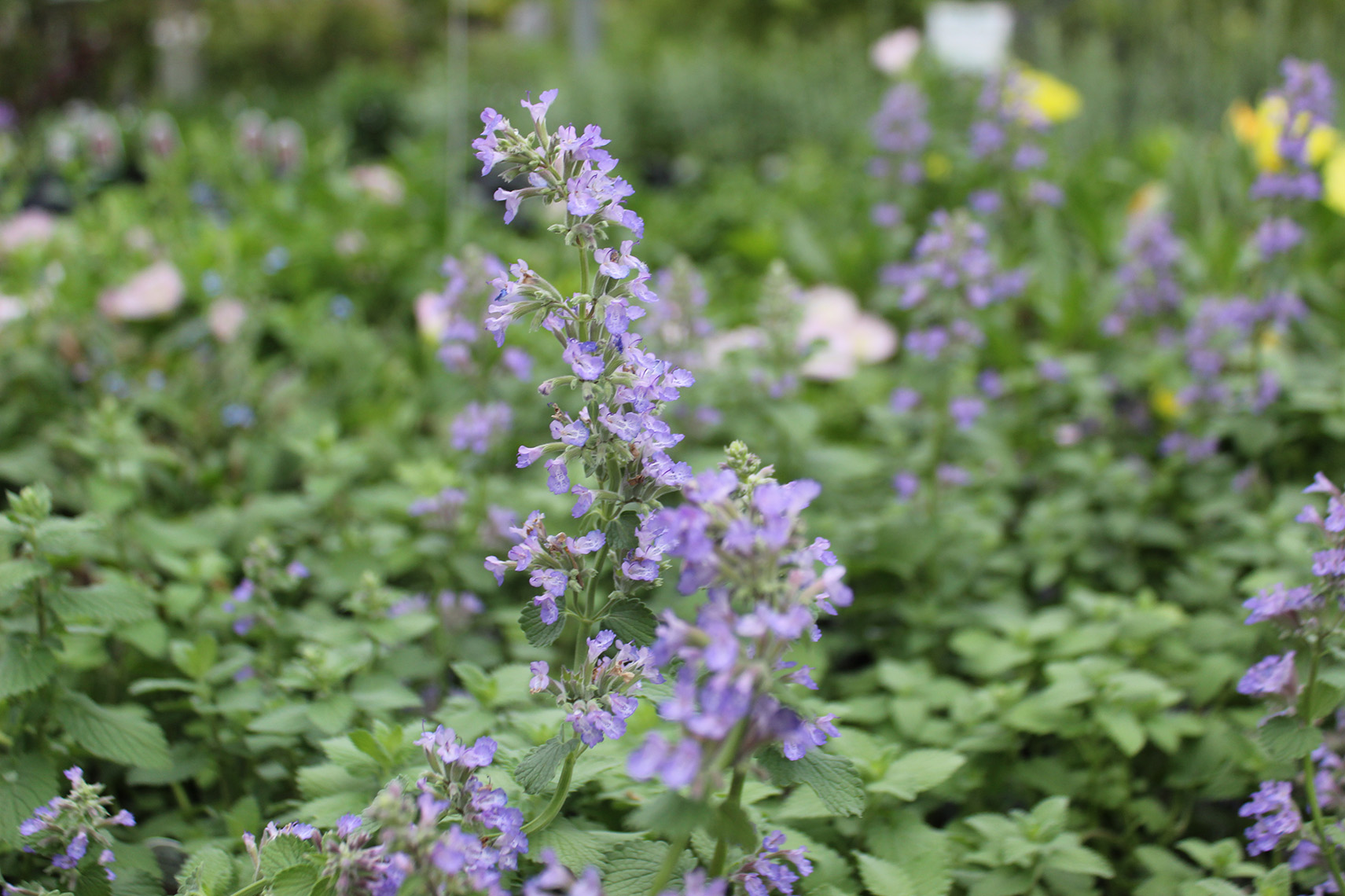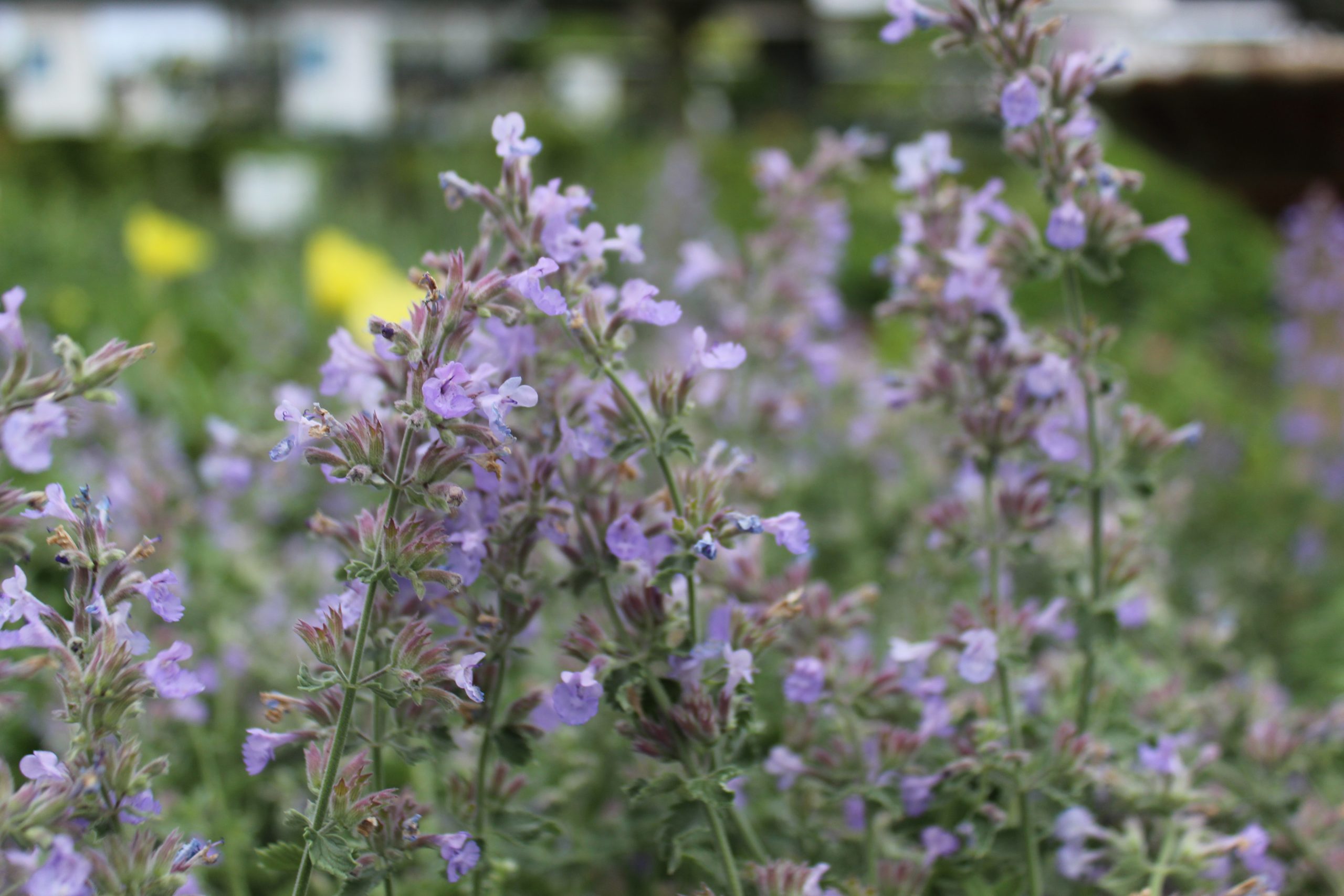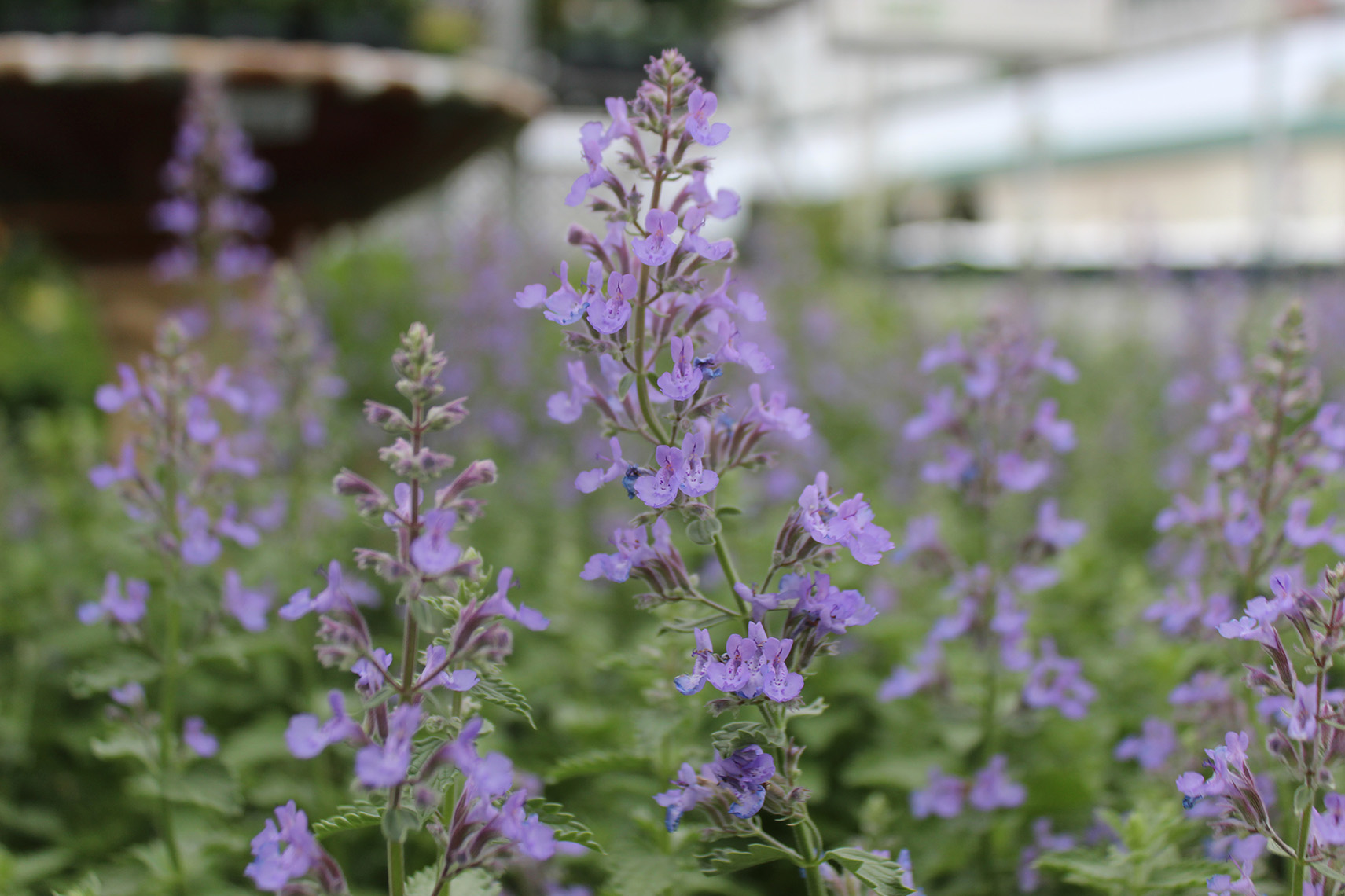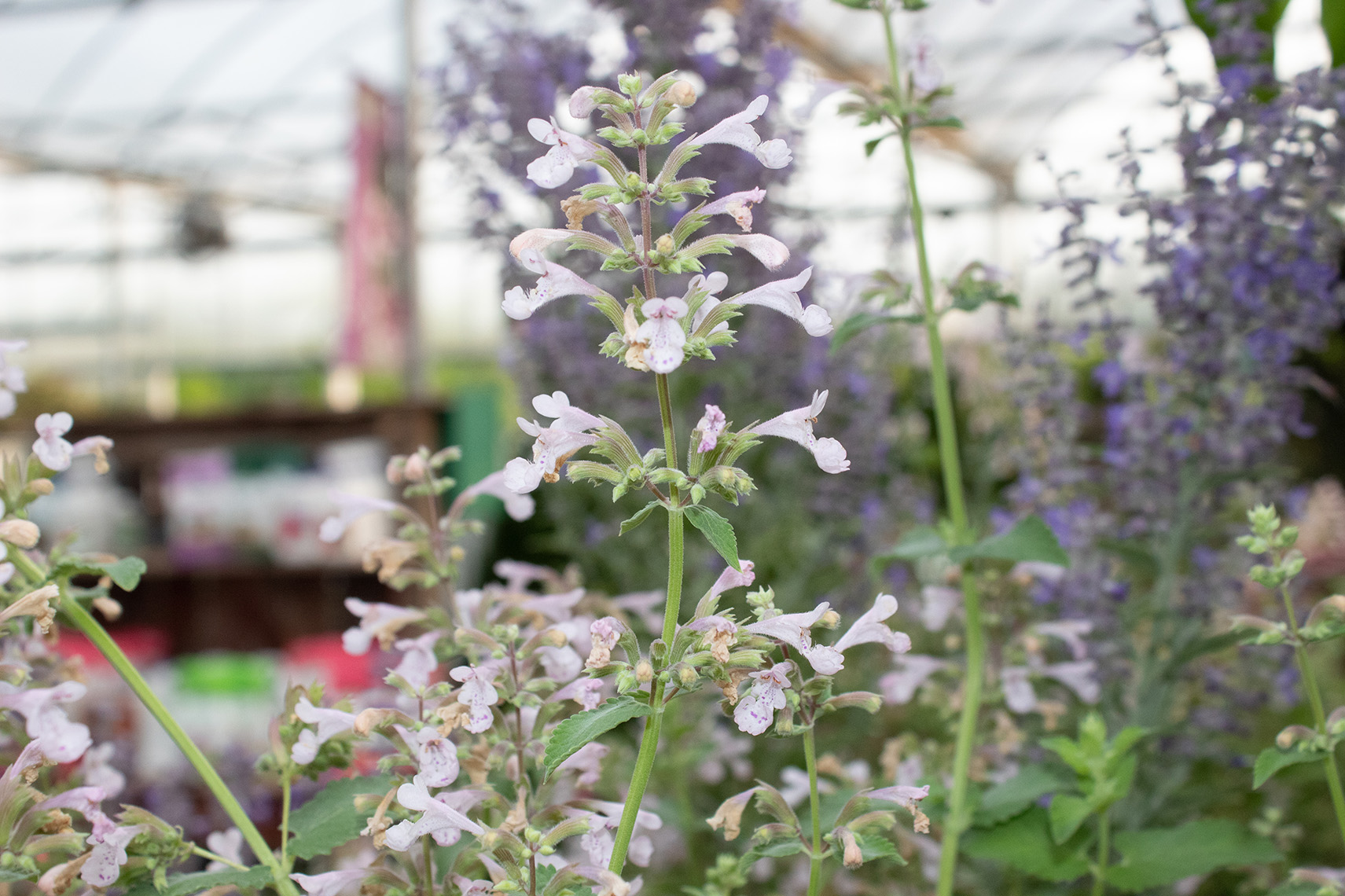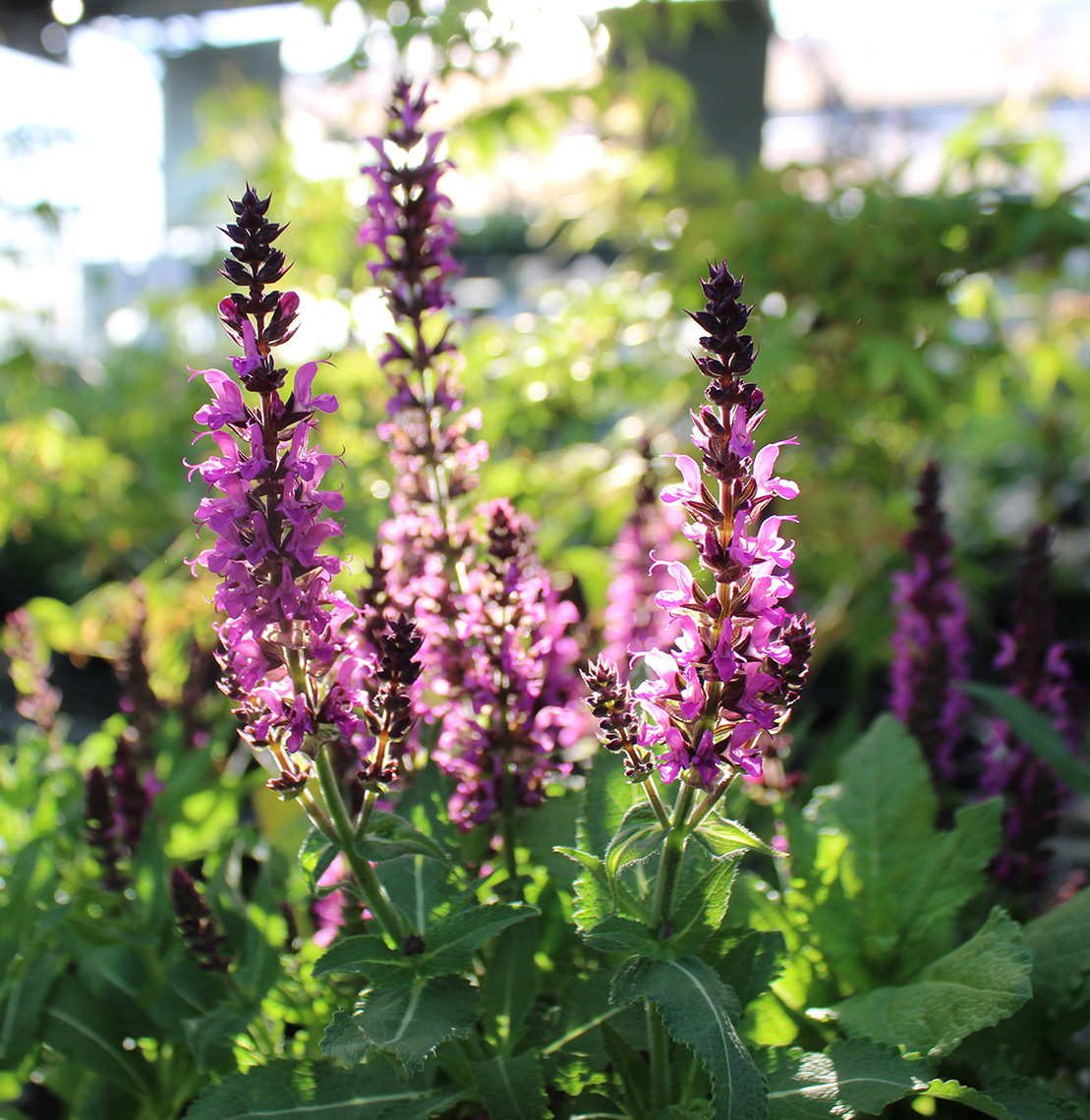Keep an eye out for a few bacterial and fungal diseases that can affect nepeta plants as well.
Bacterial leaf spot, caused by the bacterial pathogen Pseudomonas, can impact plants during cool, wet weather. You may notice yellow ringed spots with red centers on foliage, and disfigured flowers.
Splashing water can spread this disease, so avoid handling plants when they’re wet and limit overhead watering. Remove infected foliage, and in severe cases, remove and dispose of infected plants.
Caused by the Cercospora species of fungi, leaves with blight may develop small spots surrounded by yellow halos that brown over time, eventually causing foliage to wilt and drop. Infected plants should be removed and destroyed.
Always rotate crops if you can, and avoid planting catmint in places that have had issues with blight in the past.
Caused by a number of different pathogens, root rot can cause roots to soften and darken, ultimately causing stems to weaken, and plants to die.
There isn’t a good way to treat root rot, but you can greatly reduce risk by planting in a location with good drainage. Remove and dispose of infected plants.
Septoria leaf spot is a fungal disease caused by Septoria lycopersici. During very wet weather, circular spots with dark edges and gray centers may appear on older leaves, eventually causing leaf drop.
Avoid handling plants when they are wet, keep weeds down, and remove and dispose of infected foliage.
